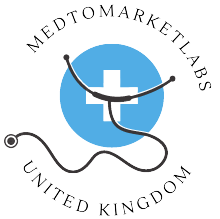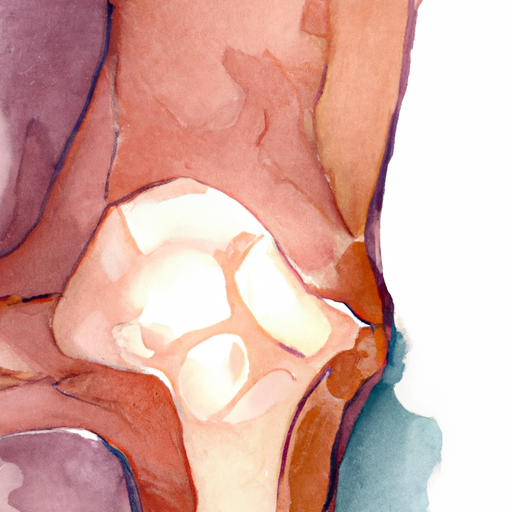Arthrosis, also known as osteoarthritis, is a common degenerative joint disease that affects millions of people worldwide. It is characterized by the breakdown of cartilage in the joints, leading to pain, stiffness, and reduced mobility. In this article, we will explore the causes, symptoms, and diagnosis of arthrosis, as well as the various treatment options available. From medications to physical therapy, we will delve into the most effective ways to manage the condition. Additionally, we will discuss lifestyle changes and prevention strategies that can help individuals reduce the risk of developing arthrosis. So, if you or a loved one is struggling with arthrosis, read on to gain a better understanding of this condition and discover the best approaches for managing it.
1. Understanding Arthrosis: Causes, Symptoms, and Diagnosis
Arthrosis, also known as osteoarthritis, is a degenerative joint disease that affects millions of people worldwide. It occurs when the protective cartilage that cushions the ends of bones within a joint gradually wears down over time. This causes the bones to rub against each other, leading to pain, stiffness, and swelling.
Understanding the causes of arthrosis is crucial in order to prevent and manage the condition effectively. While aging is a primary risk factor, other factors such as obesity, joint injuries, repetitive stress on joints, and genetic predisposition can also contribute to the development of arthrosis. Additionally, certain medical conditions like rheumatoid arthritis and metabolic disorders can increase the likelihood of developing this condition.
The most common symptom of arthrosis is joint pain, which usually worsens with activity and improves with rest. Stiffness, especially in the morning or after periods of inactivity, is another prominent symptom. As the disease progresses, individuals may experience limited range of motion, joint swelling, and the formation of bony enlargements known as bone spurs.
Diagnosing arthrosis typically involves a combination of medical history assessment, physical examination, and imaging tests. During the medical history evaluation, doctors inquire about the patient’s symptoms, their duration, and any risk factors or previous injuries. A physical examination may involve checking for joint tenderness, swelling, and evaluating joint flexibility. X-rays, magnetic resonance imaging (MRI), and joint fluid analysis can help to confirm the diagnosis and assess the severity of the condition.
It is important to note that while there is no cure for arthrosis, there are various treatment options available to manage the symptoms and improve quality of life. Non-pharmacological approaches include weight management, regular exercise, physical therapy, and the use of assistive devices such as braces or shoe inserts. Medications like pain relievers, nonsteroidal anti-inflammatory drugs (NSAIDs), and corticosteroid injections may be prescribed to alleviate pain and reduce inflammation.
In more severe cases, surgical interventions such as joint replacement or joint realignment may be necessary. These procedures aim to restore joint function and alleviate pain. However, they are typically considered as a last resort when conservative treatments have failed to provide adequate relief.
In conclusion, arthrosis is a chronic joint disease that can significantly impact an individual’s daily life. Understanding the causes, symptoms, and diagnosing this condition is crucial for early intervention and management. By adopting a multidisciplinary approach involving lifestyle modifications, medications, and, if necessary, surgical interventions, individuals with arthrosis can effectively alleviate symptoms and improve their overall well-being.
2. Effective Treatment Options for Arthrosis: From Medications to Physical Therapy
Arthrosis, also known as osteoarthritis, is a degenerative joint disease that affects millions of people worldwide. It is characterized by the breakdown of cartilage in the joints, leading to pain, stiffness, and reduced mobility. While there is no cure for arthrosis, several treatment options exist to manage the symptoms and improve the quality of life for those affected.
One of the primary treatment approaches for arthrosis involves the use of medications. Nonsteroidal anti-inflammatory drugs (NSAIDs) are commonly prescribed to relieve pain and reduce inflammation in the affected joints. Over-the-counter options like ibuprofen and naproxen sodium can be effective in providing short-term relief. However, for long-term use or severe symptoms, prescription-strength NSAIDs may be necessary. These medications should be used under the guidance of a healthcare professional as they can have side effects.
In addition to NSAIDs, analgesics or pain relievers may be recommended to manage arthrosis symptoms. These medications, such as acetaminophen, work by blocking pain signals and can be useful for individuals who cannot take NSAIDs due to gastrointestinal issues or other contraindications. However, it is important to note that analgesics do not reduce inflammation.
Another treatment option for arthrosis is the use of topical creams or gels that contain ingredients such as capsaicin or menthol. These products are applied directly to the affected joints and can provide temporary pain relief. However, they do not address the underlying causes of arthrosis and should be used in conjunction with other treatment modalities.
Physical therapy plays a crucial role in the management of arthrosis. A physical therapist can design an exercise program tailored to the individual’s needs, focusing on strengthening the muscles around the affected joints and improving flexibility. These exercises help to alleviate pain, improve joint function, and prevent further deterioration. Additionally, physical therapists may employ techniques like heat or cold therapy, ultrasound, or electrical stimulation to provide pain relief and promote healing.
For individuals with severe arthrosis symptoms that do not respond adequately to conservative treatments, surgical interventions may be considered. Joint replacement surgery, such as total knee or hip replacement, can be an effective option to relieve pain, restore mobility, and improve the overall quality of life. However, surgery is generally reserved for cases where other treatments have failed or the joint damage is extensive.
It is important to note that the effectiveness of treatment options for arthrosis varies from person to person. What works for one individual may not work for another. Therefore, it is crucial to consult with a healthcare professional to determine the most suitable treatment approach based on the severity of symptoms, overall health, and individual circumstances.
In conclusion, arthrosis is a chronic joint condition that requires ongoing management. While there is no cure for arthrosis, several treatment options are available to alleviate symptoms and improve the quality of life for those affected.
3. Lifestyle Changes and Prevention Strategies for Arthrosis
Arthrosis, also known as osteoarthritis, is a degenerative joint disease that affects millions of people worldwide. While there is no definitive cure for arthrosis, there are several lifestyle changes and prevention strategies that can help manage the symptoms and slow down the progression of the disease.
One of the key lifestyle changes recommended for individuals with arthrosis is maintaining a healthy weight. Excess weight puts extra stress on the joints, particularly the knees and hips, leading to increased pain and discomfort. By losing weight through a combination of a balanced diet and regular exercise, individuals can reduce the strain on their joints and improve their overall mobility.
Regular exercise is essential for managing arthrosis. Low-impact activities such as swimming, cycling, and walking can help improve joint flexibility, strengthen muscles around the affected joints, and reduce pain. It is important to consult with a healthcare professional or physical therapist to develop an exercise plan tailored to individual needs and limitations.
Another lifestyle change that can benefit individuals with arthrosis is the adoption of joint-friendly habits. This includes avoiding activities that put excessive strain on the joints, such as lifting heavy objects or participating in high-impact sports. Additionally, using assistive devices like braces, canes, or orthopedic shoes can provide extra support and reduce joint stress.
Maintaining a healthy and balanced diet can also contribute to the management of arthrosis. Consuming foods rich in omega-3 fatty acids, such as fish, nuts, and seeds, can help reduce inflammation in the joints. Including plenty of fruits and vegetables in the diet provides essential vitamins and minerals that promote joint health. It is also advisable to limit the consumption of processed foods, sugary snacks, and alcohol, as they can exacerbate inflammation and contribute to weight gain.
Prevention strategies for arthrosis involve taking proactive steps to protect joint health. This includes avoiding repetitive joint movements and maintaining proper posture during activities. Using ergonomic tools and equipment can help reduce joint strain during tasks that involve repetitive motions, such as typing or gardening. Regular breaks and stretching exercises can also prevent stiffness and promote joint flexibility.
Furthermore, it is important to pay attention to any early signs of joint discomfort and seek medical advice promptly. Early diagnosis and treatment can help prevent the progression of arthrosis and minimize the impact on daily life.
In conclusion, while there is no cure for arthrosis, incorporating lifestyle changes and prevention strategies can significantly improve the quality of life for individuals living with this condition. By maintaining a healthy weight, engaging in regular exercise, adopting joint-friendly habits, following a balanced diet, and taking preventive measures, individuals can effectively manage the symptoms of arthrosis and slow down its progression. It is important to consult with healthcare professionals for personalized recommendations and guidance on managing arthrosis.
You can find out more about this theme here: https://bbgate.com/media/phenylacetone-p2p-synthesis-via-bmk-ethyl-glycidate.86/.

